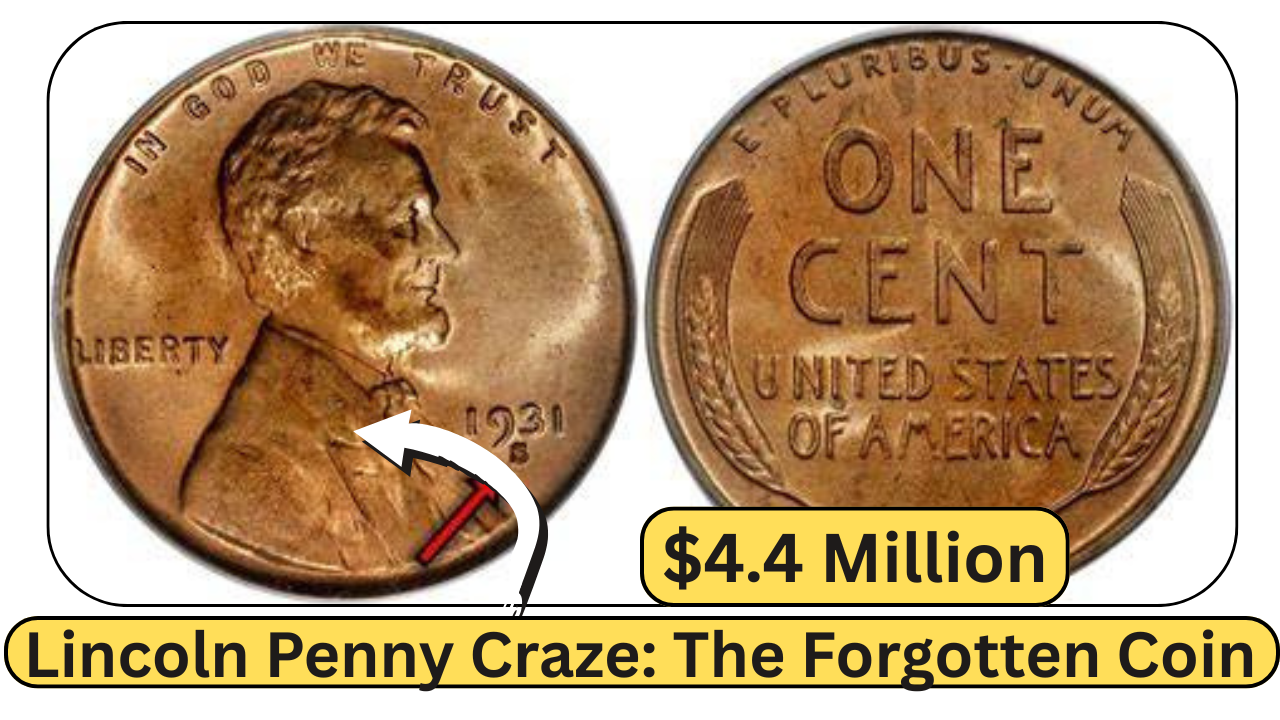Imagine finding a penny in your pocket worth $4.4 million! The Lincoln Wheat Penny, minted from 1909 to 1958, is sparking a nationwide craze in 2025 as collectors hunt for a rare version that could be hiding in plain sight. With Abraham Lincoln on the front and wheat stalks on the back, these coins are common, but one ultra-rare mistake from 1943 has collectors buzzing. X posts are wild with stories of people finding valuable pennies, like one worth $10,000 in a piggy bank! Let’s dive into why this penny is so special and how you can spot a fortune in your change.
A Penny Packed with History
The Lincoln Wheat Penny, designed by Victor David Brenner, first hit pockets in 1909 to celebrate Lincoln’s 100th birthday. It was the first U.S. coin to feature a real person, with wheat stalks on the back symbolizing prosperity. Minted in Philadelphia (no mint mark), Denver (D), and San Francisco (S), billions were made. In 1943, to save copper for World War II, pennies were made of zinc-coated steel, but a few copper blanks were accidentally used, creating the legendary 1943 copper penny. One sold for $1.7 million in 2010, and experts now value top examples at $4.4 million
Why This Penny Is Worth Millions
The $4.4 million price comes from the 1943 copper penny, one of only 15–20 known to exist. During World War II, the U.S. Mint switched to steel pennies, but a few copper planchets were mistakenly struck, making them super rare. Other valuable Wheat Pennies include the 1909-S VDB ($500–$100,000), 1955 Doubled Die ($1,000–$33,000), and 1922 No D ($500–$20,000). Condition is everything—unworn, shiny coins (MS65 or higher) fetch the most. X users warn against fake $4 billion claims, but real sales like $840,000 in 2021 prove these coins are treasures.
Top Valuable Wheat Pennies to Find
Here’s what to look for in your change:
- 1943 Copper Penny: Copper, not steel, worth $10,000–$4.4 million.
- 1909-S VDB: Has “VDB” initials, worth $500–$100,000.
- 1955 Doubled Die: Blurry date or “LIBERTY,” worth $1,000–$33,000.
- 1922 No D: No “D” mint mark, worth $500–$20,000.
| Feature | Common Wheat Penny | Rare 1943 Copper Penny |
|---|---|---|
| Year | 1909–1958 | 1943 |
| Material | Copper or steel (1943) | Copper (error) |
| Mint Mark | None, D, or S | None, D, or S (rare) |
| Value | $0.01–$1 | $10,000–$4.4M+ |
Where to Find These Hidden Treasures
Wheat Pennies are still out there—in change from stores, vending machines, or old coin jars. A 2025 X post shared a $6,000 penny found in a coffee shop tip jar! Many were saved as keepsakes, so check family collections, flea markets, or bank rolls. The 1943 copper penny is the ultimate prize, but even lesser finds like a 1955 Doubled Die can bring $1,500. With millions still in circulation, your odds of finding a rare one are slim but real, making every penny worth a quick look.
How to Spot a $4.4 Million Penny
If you find a 1943 penny, here’s how to check if it’s the rare copper one:
- Date: Must say “1943.”
- Magnet test: Copper doesn’t stick; steel does.
- Color: Copper is bronze, not silver-gray like steel.
- Weight: Copper is 3.11 grams, steel 2.7 grams.
- Professional check: Get it graded by PCGS or NGC.
Don’t clean it—cleaning ruins value. Store it in a plastic coin sleeve and compare it to images on PCGS or NGC sites. Take it to a coin shop or grading service for authentication. Auction houses like Heritage Auctions can help you sell for top dollar. Avoid scams about $4 billion pennies—stick to trusted sources like usmint.gov.
Join the Penny Hunt Craze
The $4.4 million 1943 copper penny is a collector’s dream, with only a handful known to exist. While $4 billion claims are myths, real sales like $1.7 million in 2010 and $840,000 in 2021 show these coins are life-changers. As America nears its 250th anniversary in 2026, coin fever is growing. Grab a magnifying glass, check your change for 1943 pennies, and look for copper color or errors. Coin collecting is a fun way to touch history, and your next penny could be worth millions. Start hunting today—your change might hold a fortune

